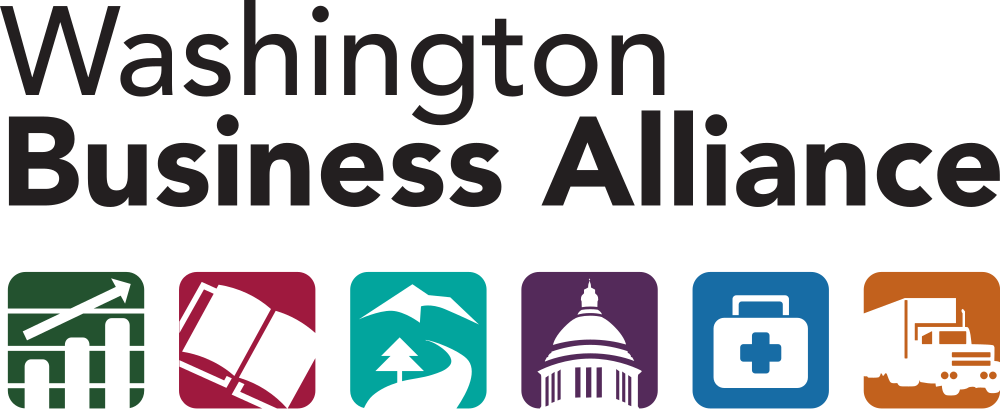After years of fierce partisan politics over health care, from the passage of the Affordable Care Act (Obamacare) in 2010, through the recent failure of the American Health Care Act (the Republican replacement plan), three options exist going forward:
- Undermine Obamacare through administrative neglect or action by a hostile Congress and Administration, likely precipitating a crisis that impacts insurers, providers and enrollees with critical health issues who would lose coverage.
- Stabilize Obamacare with necessary administrative and legislative action by supporting the original subsidies for those between the 138–250% of Federal Poverty Level[1], continuing to enforce the enrollment mandate and by supporting the health care exchanges. Yet how would Republicans justify this change of course after years of voting for repeal, especially if Democrats do not offer engagement?
- Improve our current system. With both parties vulnerable, yet committed to reform, WA should take this rare opportunity for bipartisan cooperation to engage in improving our health care system to provide higher quality, more universal and affordable coverage.
We urge our elected representatives at the state and federal level to pursue this third option.
Meanwhile, the Affordable Care Act remains the law.
- It has strengths:
- It also has weaknesses:
- The rate of increase in Healthcare spending, while lessened, still outpaces the growth of the GDP
- The cost to the Federal Government of providing insurance premium and out-of-pocket subsites requires significant new taxes
- Affordability is difficult for many of the working poor and middle class
- Too few healthy people have enrolled in individual plans
The majority agrees that the federal government has a responsibility to facilitate a system which provides access to affordable, quality healthcare coverage for all its citizens. This premise is analogous to ensuring clean air, water, and universal education.
What reforms might improve affordability, cost-effectiveness, innovation and competition?
- Empowering the states to foster innovation and flexibility to improve access, quality and costs.
- Cost-sharing by all. It is hard to control costs of services that are offered free or nearly free. One cost control strategy requires everyone, from the poorest to the wealthiest, to bear financial responsibility that is significant to their resources but not impoverishing while benefiting from comprehensive coverage when out-of-pocket expenses for catastrophic care exceeds their yearly out-of-pocket limits. To avoid risk of financial ruin requires that insurance benefits do not have a dollar cap on yearly out of pocket expenses or on lifetime benefits.
- Improving affordability while covering a greater percentage of healthcare expenses cost-consciously thru tax policy[4] with the provision that whatever mechanism is used must be applicable to all, from the wealthiest to the poorest.
- Reducing dependency on employer sponsored health insurance coverage which:
- Adds to the expense of American made products compared to those of oversea competitors who do not incur the cost of employee healthcare.
- Distorts the healthcare market through its tax credits by further shielding the insured from the true cost of their care.
- Lacks portability thus tethering employees to their current employer. Employer sponsored wellness, education and support programs could still be supported by their own tax credits or be provided as part of supplemental plans offered by employers.
What reforms might help meet goals of universal coverage while maintaining affordability?
- Use Automatic Enrollment instead of penalties and mandates to further reduce the number of uninsured. We are the only country besides Mexico in the Organization for Economic Cooperation and Development that doesn’t have universal coverage.
- Index income to enrollees’ cost of premiums and out-of-pocket expenses to improve fairness and affordability.[5] Using income indexing for the poorest to the wealthiest addresses concerns over fairness and affordability for lower and middle income groups while improving cost-consciousness of all income levels.
- Set up robust Healthcare Exchanges to foster transparent and competitive insurance markets.
All involved may favor these additional strategies to improve quality and affordability:
- Allow different service/payment models[6] to compete on price and quality with the goal of improving patient care and safety while reducing costs.
- Control skyrocketing prescription medication costs by allowing the government to negotiate—not price set—with pharmaceutical companies and by improving educational guidelines for providers and the public while supporting the FDA’s ability to assure drug quality control and safety monitoring.
- Improve transparency in care outcomes and patient satisfaction as well as in fees of providers, suppliers and hospitals so that services and providers can be more easily compared, making the marketplace more competitive.
The Washington Business Alliance advances solutions that are good for society and business, rather than what’s good for partisan brand building.
We’ve developed a roadmap for both parties to navigate with collaboration rather than contention. Success will come from moderates of both parties melding a powerful center that delivers the policies we need.
That can happen if people demand what they want, and if business and community leaders fill the void by engaging and driving the changes we need. National leadership is likely to emerge from the states. Working together, Washington state can play a key role, as we have many times in the past.
And if we don’t fill the void with practical solutions, who will?
And if we don’t do it now, what will be the cost to our country?
Footnotes:
[1] Sec 1402 of the ACA provided subsidies for out-of-pocket expenses for those in the 100–250% of Federal Poverty Level. Republicans have challenged this in court and the current administration must decide whether to defend those subsidies or not.
[2] http://jamanetwork.com/journals/jamainternalmedicine/article-abstract/2542420. Medicaid Expansion eligible enrollees in Kentucky and Arkansas (Expansion States) compared to their control group in Texas (non-Expansion state) before then in 2nd year of program showed not only increased access to care but also indicators of improved health such as fewer missed medications, fewer Emergency Room visits, increased regular care for chronic conditions, screening for and monitoring of Diabetes Mellitus.
[3] See: http://www.medicareadvocacy.org/combating-fraud-waste-and-abuse-in-health-care/
[4] Such as: i) use of Health Savings Accounts, ii) reducing threshold (currently 10% of AGI) for deduction of medical expenses on taxes, or iii) allowing access to IRA and 401K accounts to cover medical costs.
[5] Currently those on Medicaid bear little or no financial responsibility for medical costs. Those at the 138%250% of Federal Poverty Level have indexed subsidies for premiums and out-of-pocket expenses and above this level there are subsidies only for premium support up to 400% of FPL. Thus, someone with income at the 251% FPL pays the same out-of-pocket expenses as the wealthy even though those expenses represent a much higher percentage of their income.
[6] Service models such as: Preferred Provider Organizations, Patient Centered Medical Homes, Health Maintenance Organizations, Accountable Care Organizations, payment models such as Fee-For-Service, capitation (per member/per month all-inclusive fee), and bundling for episodes of care.
